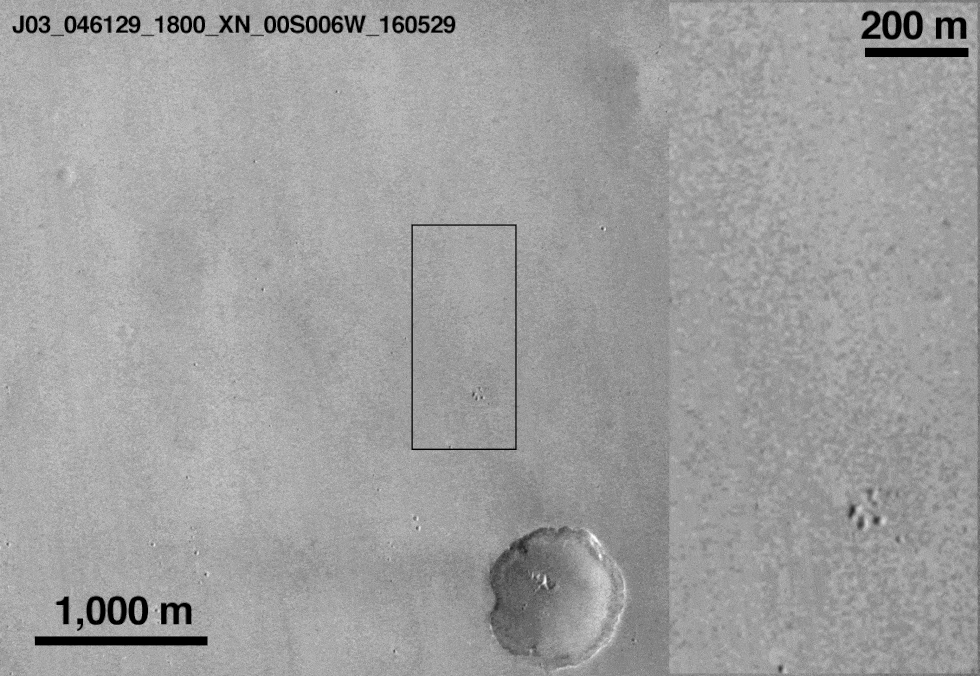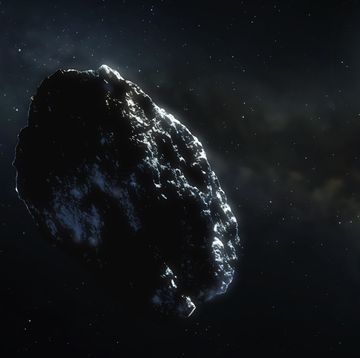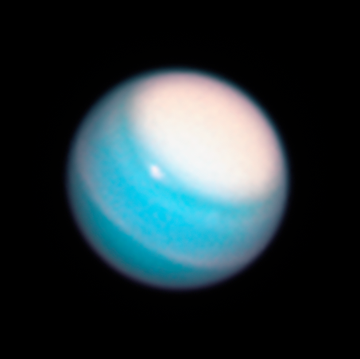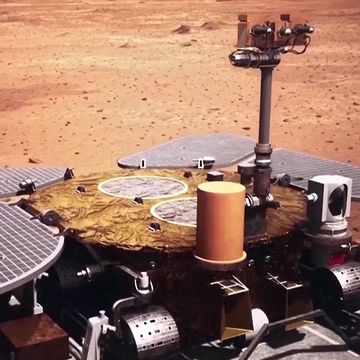NASA's Mars Reconnaissance Orbiter (MRO) has spotted a change on the surface of Mars that astronomers believe is ESA's lost Schiaparelli lander, which crash landed on the Red Planet Wednesday. The image above shows the Schiaparelli landing site in May 2016 compared to today with two new spots visible in today's image. The bright spot in the lower half is likely the lander's parachute, and the darker spot at the top of the image could be the location of Schiaparelli's impact after its thrusters cut out prematurely.
"Estimates are that Schiaparelli dropped from a height of between 2 and 4 kilometers, therefore impacting at a considerable speed, greater than 300 km/h," ESA wrote in a statement. "The relatively large size of the feature would then arise from disturbed surface material. It is also possible that the lander exploded on impact, as its thruster propellant tanks were likely still full."
Now that the MRO has a target, it will snap more photos of the landing site with its High Resolution Imaging Science Experiment (HiRISE) camera as soon as it makes another pass over the same area. The HiRISE images should confirm without a doubt if these new objects on the surface of Mars are what's left of the Schiaparelli lander.
This is actually the second time the MRO has located a European lander that malfunctioned when trying to land on Mars. Europe's first shot at a Mars landing, the 2003 British Beagle 2 spacecraft, lost contact during its final descent and was lost until the MRO spotted it twelve years later.
The Schiaparelli spacecraft was an experimental lander and part of the larger ExoMars mission, a joint venture between ESA and Russia's Roscosmos. ExoMars also includes the Trace Gas Orbiter, which successfully entered Mars orbit on Wednesday, as well as a planned rover for 2020. The ESA hoped to use data from Schiaparelli's lading to develop a landing system for their 2020 rover, but it's now possible that the crash landing forces them to reevaluate their timetable.
Another spacecraft claimed by the Great Galactic Ghoul.

Jay Bennett is the associate editor of PopularMechanics.com. He has also written for Smithsonian, Popular Science and Outside Magazine.














